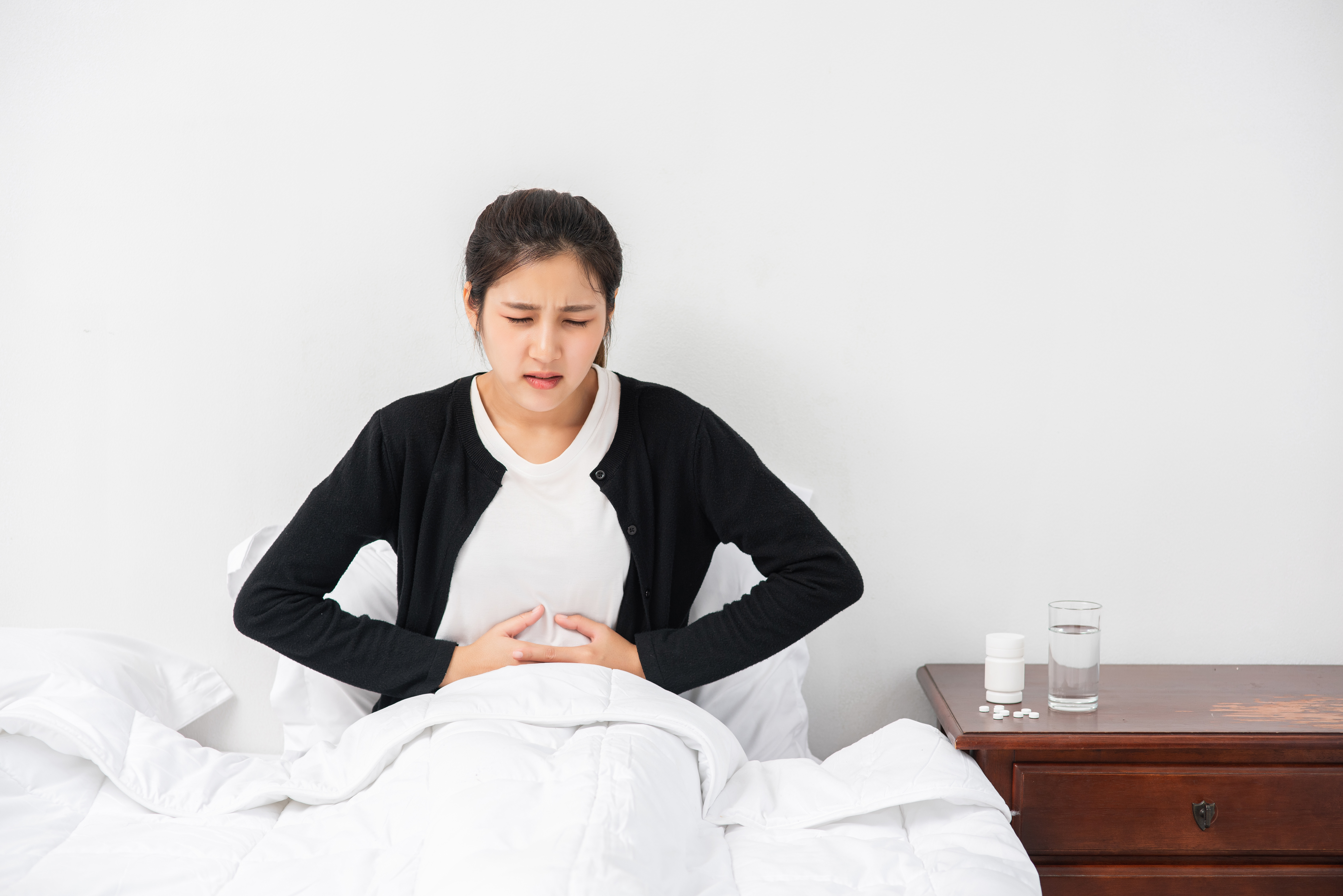Definisi
Klamidia adalah salah satu infeksi menular seksual yang disebabkan oleh bakteri Chlamydia trachomatis. Terkadang penyakit ini tidak disadari oleh penderitanya karena tidak timbul keluhan pada kelamin seperti nyeri atau duh cairan yang keluar dari vagina atau penis.
Klamidia lebih sering menyerang perempuan muda, namun tetap tidak menutup kemungkinan bisa terjadi pada laki-laki dan wanita di berbagai kelompok usia yang sudah aktif secara seksual. Klamidia adalah penyakit yang bisa diobati dan memiliki angka kesembuhan yang tinggi. Namun bila infeksi terlambat ditangani, pasien bisa mengalami masalah kesehatan yang serius.
Klamidia adalah infeksi menular seksual akibat bakteri yang paling sering ditemukan. Centers for Disease Control and Prevention (CDC) memperkirakan ada sekitar empat juta kasus klamidia pada tahun 2018.
Anda bisa membaca lebih lanjut mengenai infeksi menular seksual di sini: Infeksi Menular Seksual - Definisi, Penyebab dan Faktor Risiko.
Penyebab
Infeksi klamidia disebabkan oleh bakteri Chlamydia trachomatis yang menyebar melalui kontak seksual, ketika cairan vagina atau semen yang mengandung bakteri tersebut berpindah dari satu orang ke orang lainnya. Bakteri ini juga dapat menyebar pada bayi baru lahir dari ibu hamil yang terinfeksi klamidia. Terdapat banyak cara dalam penyebaran klamidia, yakni:
- Hubungan seksual, ketika bakteri klamidia berpindah dari penis ke liang vagina dan sebaliknya.
- Hubungan seks anal, saat bakteri klamidia berpindah dari penis ke liang dubur pasangan dan sebaliknya.
- Hubungan seks oral, saat bakteri klamidia berpindah dari mulut ke vagina, penis, atau liang dubur pasangan dan sebaliknya.
- Hubungan seks yang melibatkan mainan seksual, ketika bakteri klamidia berpindah dari mainan ke mulut, penis, vagina, atau liang dubur pasangan.
- Kontak dari kelamin dengan mata, contohnya ketika Anda menyentuh kelamin dari seseorang yang sudah terinfeksi klamidia lalu Anda menggosok mata tanpa mencuci tangan terlebih dahulu.
Klamidia tidak dapat menular melalui:
- Aktivitas berciuman.
- Berbagi makanan atau minuman.
- Berpelukan atau berpegangan tangan.
- Menggunakan toilet yang sama dengan orang terinfeksi klamidia.
- Menghirup udara yang sama dengan orang yang terinfeksi klamidia.
Faktor Risiko
Faktor risiko yang dapat meningkatkan kemungkinan seseorang mengalami infeksi klamidia di antaranya adalah:
- Aktif secara seksual sebelum usia 25 tahun.
- Memiliki pasangan seksual lebih dari satu.
- Berhubungan seksual dengan pasangan yang terinfeksi klamidia.
- Tidak konsisten menggunakan kondom.
- Memiliki riwayat infeksi menular seksual sebelumnya.
- Lahir dari seorang ibu yang terinfeksi klamidia.
Gejala
Bakteri penyebab klamidia dapat menyerang leher rahim, anus, dan kerongkongan pada wanita. Sedangkan pada pria, bakteri tersebut dapat menyerang uretra (saluran keluarnya urine), anus, atau tenggorokan.
Walaupun terkadang tidak menimbulkan gejala, namun Anda perlu waspada akan infeksi klamidia bila mengalami gejala seperti berikut:
- Terdapat cairan berwarna putih, kekuningan, atau abu-abu yang keluar dari vagina atau penis.
- Terdapat nanah pada urine.
- Peningkatan keinginan untuk buang air kecil.
- Merasakan nyeri atau sensasi terbakar saat buang air kecil.
- Mengalami perdarahan di luar siklus menstruasi.
- Nyeri yang tidak wajar saat menstruasi.
- Nyeri saat berhubungan seksual.
- Terasa gatal atau terbakar pada bagian tubuh di sekitar vagina atau penis.
- Nyeri pada perut bagian bawah atau liang dubur.
- Demam, menggigil.
- Rasa tidak nyaman, perdarahan, atau keluar lendir dari liang dubur.
- Nyeri tenggorokan (hanya bila klamidia menginfeksi tenggorokan).
- Kemerahan, nyeri, dan terdapat cairan yang kental pada mata.
Diagnosis
Dokter akan melakukan wawancara medis, pemeriksaan fisik, dan pemeriksaan penunjang bila perlu pada pasien guna menegakkan diagnosis infeksi klamidia.
Umumnya dokter akan bertanya mengenai:
- Keluhan utama dan keluhan penyerta yang dirasakan,
- Sudah berapa lama menderita keluhan tersebut.
- Riwayat dan perilaku dalam berhubungan seksual.
- Riwayat penyakit terdahulu.
- Riwayat pengobatan.
- Riwayat penyakit di keluarga.
Dokter akan melakukan pemeriksaan fisik dengan melakukan pemeriksaan pada bagian kelamin, anus dan mulut. Dokter dapat mengambil sebagian kecil sampel cairan pada alat kelamin dengan metode swab. Sampel ini lalu akan diteliti di laboratorium guna melihat bila terdapat bakteri klamidia atau mikroba lain di bawah mikroskop. Selain itu, dokter juga dapat melakukan pemeriksaan penunjang lain seperti pemeriksaan urine bila perlu.
Anda bisa membaca lebih lanjut mengenai pemeriksaan urine di sini: Pemeriksaan Urine Lengkap - Definisi, Indikasi dan Prosedur Pemeriksaan.
Tata Laksana
Karena penyakit ini disebabkan oleh infeksi bakteri, maka obat antibiotik atau antibakteri bisa diberikan untuk mengatasi bakteri. Anda dapat menerima antibiotik yang hanya diminum satu kali atau antibiotik yang diberikan untuk berhari-hari. Seluruh penggunaan antibiotik harus diminum sesuai indikasi dan pengawasan oleh dokter yang merawat.
Pada sebagian besar kasus, infeksi akan sembuh dalam waktu satu hingga dua minggu. Dalam masa pengobatan, disarankan Anda untuk tidak melakukan hubungan seksual terlebih dahulu. Selain itu, Anda juga disarankan untuk melakukan pemeriksaan skrining klamidia dan infeksi menular seksual lain bersama pasangan seksual Anda, walaupun saat ini mungkin mereka tidak mengalami gejala atau keluhan apapun.
Setelah klamidia sembuh, bukan berarti Anda tidak akan menderita klamidia lagi. Infeksi klamidia dapat datang lagi bila Anda tidak melakukan pencegahan dan tidak mempraktikkan hubungan seksual yang sehat.
Komplikasi
Bila tidak diobati dengan baik, maka klamidia dapat menyebabkan beberapa komplikasi.
Infeksi Panggul
Infeksi panggul adalah kondisi peradangan pada rahim dan tuba falopi (saluran penghubung indung telur dengan rahim) wanita yang dapat menyebabkan nyeri panggul dan demam. Infeksi yang cukup parah dapat membutuhkan rawat inap dan pemberian antibiotik melalui infus. Infeksi panggul dapat merusak tuba falopi, sel telur, rahim, dan serviks (leher rahim).
Epididimitis
Infeksi klamidia dapat menyebabkan saluran yang berlokasi di samping testikel (epididimis) mengalami peradangan atau infeksi. Gejala dari epididimitis adalah demam, nyeri pada kantung buah zakar, dan bengkak.
Prostatitis
Walaupun jarang, bakteri klamidia dapat menyebar sampai kelenjar prostat pria. Prostatitis atau infeksi kelenjar prostat dapat menyebabkan nyeri pada punggung bawah dan di sekitar kelamin.
Infeksi Bayi Baru Lahir
Infeksi klamidia dapat menyebar melalui liang vagina pada bayi baru lahir melalui persalinan, dan menyebabkan radang paru atau infeksi mata yang serius.
Kehamilan Ektopik
Kehamilan ektopik atau kehamilan di luar rahim terjadi ketika sel telur yang sudah dibuahi oleh sel sperma tumbuh di luar rahim, paling sering di tuba fallopi. Bila hal itu terjadi, kehamilan harus diakhiri guna mencegah komplikasi yang mengancam nyawa pada ibu. Infeksi klamidia dapat meningkatkan risiko terjadinya kehamilan ektopik.
Infertilitas
Infeksi klamidia walaupun tidak menyebabkan tanda atau gejala apapun dapat menyebabkan luka dan penyumbatan pada tuba falopi sehingga dapat menyebabkan seorang wanita menjadi tidak subur.
Arthritis Reaktif
Pasien klamidia memiliki kemungkinan lebih tinggi untuk mendapatkan arthritis reaktif, atau dikenal juga dengan Sindrom Reiter. Kondisi ini menyerang sendi, mata, dan saluran uretra.
Pencegahan
Hal yang pasti dapat mencegah klamidia adalah dengan melakukan abstain dari aktivitas seksual. Selain itu, Anda dapat melakukan beberapa cara di bawah ini sebagai pencegahan klamidia:
- Menggunakan Kondom
Penggunaan kondom baik pada laki-laki dan perempuan dapat dilakukan pada setiap aktivitas seksual untuk menurunkan angka kemungkinan terinfeksi klamidia.
- Tidak Berganti Pasangan
Mempunyai pasangan seksual yang lebih dari satu meningkatkan risiko Anda terkena klamidia atau penyakit infeksi menular seksual lainnya.
- Melakukan Skrining Rutin
Bila Anda sudah aktif secara seksual, terutama bila Anda memiliki pasangan seksual lebih dari satu, sebaiknya Anda melakukan pengecekan rutin dengan tenaga kesehatan untuk skrining klamidia dan penyakit infeksi menular seksual lainnya.
Kapan Harus ke Dokter?
Segera ke dokter bila Anda mengalami gejala di atas dan memiliki riwayat berhubungan seksual lebih dari satu pasangan. Anda dapat melakukan pemeriksaan dengan dokter umum terdekat. Rutinlah melakukan skrining infeksi menular seksual bila Anda sering bergonta-ganti pasangan, terutama bila Anda dan pasangan sedang merencanakan kehamilan. Semakin cepat penyakit ditemukan, akan semakin cepat Anda bisa mendapat pengobatan, sehingga dapat menurunkan kemungkinan penularan pada bayi Anda.
Mau tahu informasi seputar penyakit lainnya? Cek di sini, ya!
- dr Hanifa Rahma
Centers for Disease Control and Prevention - Chlamydia - CDC Detailed Fact Sheet. (2022). Retrieved 19 September 2022, from https://www.cdc.gov/std/chlamydia/stdfact-chlamydia-detailed.htm.
Cleveland Clinic - Chlamydia. (2021). Retrieved 19 September 2022, from https://my.clevelandclinic.org/health/diseases/4023-chlamydia.
Mayo Clinic - Chlamydia trachomatis. (2022). Retrieved 19 September 2022, from https://www.mayoclinic.org/diseases-conditions/chlamydia/symptoms-causes/syc-20355349.
Web MD - Chlamydia. (2022). Retrieved 19 September 2022, from https://www.webmd.com/sexual-conditions/chlamydia#1.












